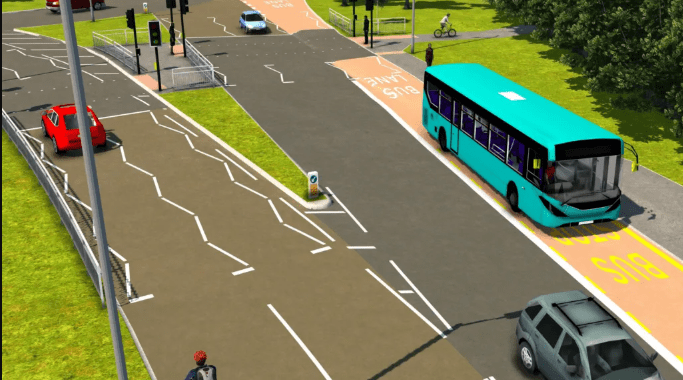The latest phase of a major infrastructure project is about to kick off in Guildford, bringing notable changes to one of the town’s key junctions.
Starting Wednesday, the Woking Road/Bellfields Junction will undergo a 29-week transformation aimed at improving safety and boosting traffic flow, all as part of the broader Weyside Urban Village (WUV) regeneration scheme.
Next phase of junction improvements to begin
As part of this next phase, drivers, cyclists, and pedestrians can expect to see several new features:
- A dedicated bus lane and modern bus shelter
- A newly constructed pedestrian footway
- Further improvements to connectivity and safety in the area
These upgrades follow the completion of a new toucan crossing on Woking Road, while works on Bellfields Road are scheduled to wrap up by October.
Integrated Plan to Support New Housing Development
The junction overhaul isn’t happening in isolation. It’s directly tied to the ongoing regeneration efforts under the WUV masterplan—an ambitious £453 million project led by Guildford Borough Council.
The project includes the construction of 1,650 new homes, and the council believes these transport improvements are essential to mitigate the increased pressure on local infrastructure.
“Each of these schemes is part of a joined-up package of improvements designed to work together. Once complete, they will improve road safety, keep traffic moving and encourage more sustainable ways to travel,” said Tom Hunt, deputy leader and lead councillor for economy and place.
How Will It Affect Local Travel?
While Woking Road will remain open throughout the works, drivers and bus passengers should expect temporary disruptions:
- The existing bus lane near the junction will be closed temporarily
- Stoke Bridges bus stop will be suspended
- Overnight closures for resurfacing and road markings will occur towards the end of the programme
These temporary adjustments aim to ensure minimal disruption during peak hours, according to the council.
Guildford’s Growing Pains: A Town on the Brink of Transformation
With a regeneration budget of nearly half a billion pounds, the WUV project is one of the largest in the borough’s history. But it’s not without its challenges.
Richard Bates, the council’s chief financial officer, previously raised concerns about the scheme’s financial pressures, warning that funding the WUV programme posed “the biggest financial risk” to the authority.
Since gaining outline planning permission in October 2021, the potential deficit for the project has risen significantly—from £50 million in May 2024, and continuing to climb due to inflation.
In response, the council confirmed in July 2025 that £20 million in capital receipts and savings from asset sales would be redirected to help stabilise the scheme’s finances.
A Long-Term Vision for Sustainable Travel
While short-term inconvenience may ruffle a few feathers, the long-term goal is a more connected, sustainable Guildford.
The council hopes the improved junction will help encourage greener transport options, such as cycling, walking, and public transport, key pillars of the WUV’s sustainable development strategy.
In Summary:
- Work starts Wednesday at Woking Road/Bellfields Junction
- 29-week project includes new bus lane, shelter, and footway
- Tied to the wider Weyside Urban Village housing and infrastructure plan
- Temporary disruption expected, but Woking Road remains open
- Council aiming for better safety, traffic flow, and sustainability
This marks the third major improvement under the WUV initiative this year evidence that Guildford is not just growing, but actively planning for a smarter, more sustainable future. Stay tuned for further updates as works progress.






